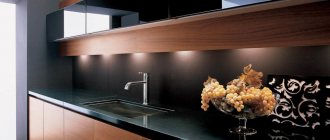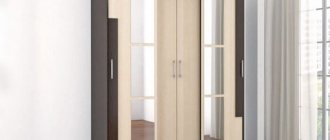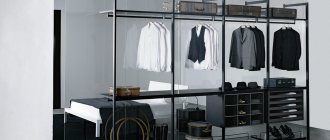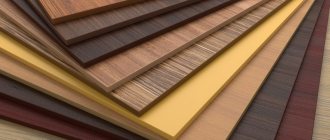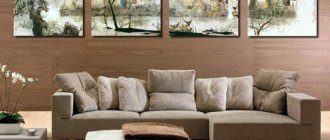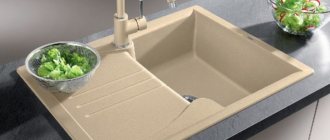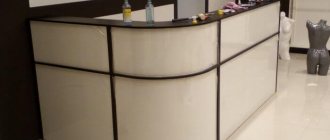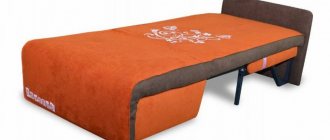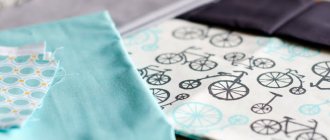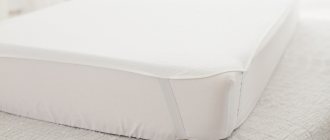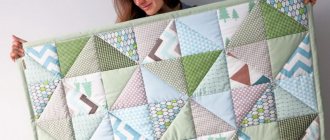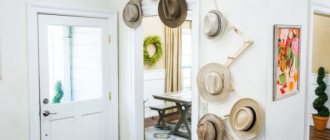Veneer furniture looks natural and noble, so its demand is growing. Professionally manufactured furniture lined with wood veneer is almost impossible to distinguish from solid wood products. Such cabinets, bedside tables, and chests of drawers last a long time, and their price is lower than for products made entirely of wood. The use of natural materials in decoration, environmental friendliness, stylish design and practicality are the main advantages of the products. Veneer furniture is a luxury affordable for most.
Advantages and disadvantages
Veneer is a thin section of natural wood, not exceeding 3mm in thickness. It is widely used in the production of modern furniture, musical instruments, and is also used as a finishing material in creating fashionable interiors. The popularity of this natural material is due to the optimal combination of price and attractive appearance of the finished products. To make it easier to make a choice, we will analyze all the pros and cons that veneer furniture has.
The advantages of the material are as follows:
- variety of colors and textures. Various types of wood are used for production: from classic pine to the most expensive varieties;
- it is a natural, environmentally friendly material. Veneer is a covering made from natural wood;
- ease of processing allows the use of veneered blanks for products of various shapes and configurations;
- relatively low cost. Furniture made from veneer is much cheaper than products made from solid wood, which makes it more accessible;
- excellent appearance - high-quality products have the correct selection of patterns, beautiful texture, which give veneered furniture a wonderful appearance;
- practicality, resistance of facades to temperature changes and high humidity. Veneer facades are not subject to cracking or deformation as a result of exposure to external factors.
The material also has disadvantages:
- veneer coating is afraid of direct sunlight: under their influence it can change color;
- choosing a pattern at the joints can be difficult, because each sheet has its own unique pattern;
- easy to care for, eliminates the use of chemical cleaners that can damage the surface;
- products made from expensive veneer options (oak, ash, beech) are not cheap.
What is veneer
This is a material obtained by longitudinally dividing natural wood into thin sheets or strips. For their production, cuts of domestic woody plants (coniferous and hardwood veneer), as well as imported exotic woody plants, are used.
Veneer is usually divided into decorative and construction.
- Veneer is made by peeling, cutting, cutting or using special methods.
- The thickness of peeled veneer is 0.6–3.5 mm.
- It is produced by cutting on horizontal saws with high wood losses and low yield of finished products.
Due to the physical properties of wood, it is processed without prior plasticization.
Cutting knives have a thickness of 0.8–4 mm. Cutting produces decorative veneer. The pattern of the veneer can be influenced by placing the wood at an angle during the cutting process. The thickness of this veneer is 0.6-0.8 mm.
Varieties
Veneered furniture is made from materials of varying quality and production methods. The price category of furniture depends on the type of veneer. There are the following types of veneer of natural origin used for furniture production:
- peeled;
- planed;
- sawn
Peeled
sawn
Planed
Natural peeled veneer is the most common and affordable type of veneer, with a thickness of 0.1 to 10 mm. Depending on the quality of the wood and compliance with the production technology, such veneer may be as good as planed veneer. It preserves the natural texture, unique pattern of wood, and has excellent aesthetic qualities.
Sliced veneer is used primarily in furniture production. Valuable wood species are used in its production. It is characterized by richness and variety of patterns and textures, which is achieved thanks to the production method. Wood blanks can be planed in different directions, at different angles, achieving unique, original natural patterns.
Sawn veneer is the first type of material that began to be produced back in the 19th century. It is of high quality and is not cheap. Today it is not made on an industrial scale, but is used to create musical instruments, inlays, interior decoration, expensive parquet floors and individual sets of custom-made furniture.
Modern varieties of veneer, subtypes of natural material, include:
- multi-veneer;
- fan line.
Multispon
Fan-line
Multispon is made from natural wood of various species, without the goal of preserving the natural pattern. This type of material is limitless in its colors, textures, and has a palette of rich wood patterns. Geometric shapes or any other design pattern can be depicted on its surface.
Fine-line is made from inexpensive species of fast-growing trees using several technological combinations:
- peeling and drying;
- painting and gluing;
- pressing and secondary planing or peeling.
The sequence of the above actions allows you to create a material of the required texture, pattern, structure and color. Fine-line often imitates the natural veneer of expensive types of wood. This type is less durable, has increased fragility and porosity.
There is a distinction between artificial veneer, which is a plastic film (PVC) with an imitation of wood pattern. A modern version of artificial veneer for furniture is eco-veneer. This material is made from multilayer polypropylene.
Types of veneer
Sliced veneer is veneer obtained by cutting a block longitudinally or transversely to the grain. Peeled veneer is a veneer of a certain thickness obtained by peeling a cutout.
Eccentric cut-out sanding is used to make decorative veneer joints.
- Log veneer is a set in which layers of a single board, log or prism are stored as they were made in a row.
- Marquetry is an ornamental veneer made primarily by hand (or on a special embossing device) of various shapes and motifs for the purpose of decorating and presenting the woody plants used.
- Mosaic is a combination of regular, repeating patterns used to create ceilings, floors and tiles from agglomerated materials.
Color spectrum
The color of natural veneer depends on the type of wood: light pine, ash, wenge, cherry, velvet or bleached oak. Each manufacturer has its own palette. But if the material is natural, then each product will have its own unique shade with an individual wood pattern.
Multi-veneer, fine-line, and eco-veneer provide the consumer with a wide choice of colors, textures and patterns, limited only by the imagination of the designers. The difference between these materials and natural veneer is that they guarantee stable color and texture, and changes in shades of the material occur strictly at the request of the customer, and not at the whim of nature.
What raw materials are used for production?
Taking into account the needs and wishes for the characteristics of the material and the final product, veneer is made from various types of wood:
- Oak. These can be trees growing in European, American territories or in wetlands. Oak is a strong and durable tree. It will fit harmoniously into the interior and is well suited for parquet flooring, doors, and furniture finishing. Color can range from white to brown.
- Nut. There are American, European, and Californian. The main color of the material is brown.
- Maple. Folded, figured, European are used. The wood is almost white. There are shades of brown.
- Cherry. European and American are used. Product color is red-brown. Used in the assembly of luxury furniture models.
- Wenge. It is an African wood that is popular and widely used in decorative coverings. The color of the material is closer to dark brown.
In the manufacture of such coverings, pine, larch, linden and birch are used.
These types of wood are valued and used in furniture production and finishing work.
Differences between artificial and natural materials
What is the difference between fine-line veneer, multi-veneer, eco-veneer and natural planed material? The main differences between artificial and natural veneer:
- all sheets of artificial material of a specific article will have an exact match of color, texture, and picture. This makes it possible to make products that are perfect in color, without inclusions or knots, and with complete matching of wood patterns. Artificial veneer sheets are interchangeable, so such products can be easily repaired or complemented with other furniture, and the color match will be perfect;
- When veneering furniture with natural materials, additional steps are required to select a pattern and color. Each product will be individual in texture and color; shades of the same veneer article may not match;
- furniture made from natural veneer looks excellent, such products are visually practically no different from furniture made from natural solid wood;
- natural veneer is durable and highly wear-resistant;
- a modern artificial analogue is eco-veneer, it costs much less than natural veneer, it is based on polypropylene, which is more environmentally friendly, unlike PVC, it does not emit harmful formaldehydes and phenols;
- eco-veneer is resistant to various chemical cleaning agents, which greatly facilitates the care of such veneer furniture.
Scope of application
Finishing furniture and interiors with veneered oak has long been firmly established in fashion, which does not lose its relevance. Veneer can be used as a single piece, or its pieces can be used to create a collage, selecting color shades that contrast with each other. A panel made using the marquetry technique using various shades of veneer is used as interior decoration, door leaf or furniture facade.
Oak veneer is used to make parquet flooring or trim and door panels; a veneered window sill can be made from a natural cut of oak wood, a bed headboard can be decorated, or a shelving unit can be made. Oak veneer is used for inlaying arched openings and passages between rooms. This material is used to decorate flights of stairs and steps. The high demand for natural oak flooring is due to the versatility of this material and its wear resistance.
Tips for selection and care
When choosing veneered furniture, the following main criteria are important:
- price;
- environmental friendliness;
- durability and wear resistance;
- aesthetic qualities;
- maintainability.
An important point is the design of the room. Modern artificial materials are excellent for implementing bold design projects, providing an unlimited range of shades, textures, and patterns. Natural material is perfect for classic room designs, combining the beauty of natural wood and the environmental friendliness of natural materials.
Natural materials require careful care without the use of aggressive chemicals.
It is enough to wipe such surfaces with a cotton rag using a soap solution. Artificial analogues are not so capricious to care for. But it is necessary to use cleaning products without abrasives, alkalis, or solvents.
Colors
Veneered doors are available in a wide range of colors.
They can be selected to suit any interior:
- For small rooms, you should give preference to light models. They will add light and make the room visually more spacious.
- White is a versatile color because it can be used in a variety of styles. Doors with white veneer look elegant and add softness and delicacy to the design. Options veneered with bleached oak look strict and restrained.
- Fans of natural color schemes should take a closer look at Milanese or Italian walnut. These shades give the veneer a natural look. Such doors are ideal for creating comfort and coziness in the interior of the room.
- Wenge-colored doors are available in a wide range of tones, from golden to dark brown. Models with wenge veneer are distinguished by excellent performance and fashionable appearance.
Photo
Characteristics
TECHNICAL DATA SHEET KAINDLFURNIERTE E1 (veneered)
Application area:
Veneered chipboard (MDF) has various applications in furniture production and interior decoration, but without a load-bearing function.
Design:
- valuable wood veneer
- load-bearing slab
- valuable wood veneer
Surface: valuable wood veneer.
Dimensions:
| Thickness | Carrier plate | Dimensions |
| 9/ 13/ 16/ 19/ 23/ 26/ 29/ 39 mm | Chipboard R2 | 2800 x 2070 mm / cross veneer possible |
| 9/ 16/ 19/ 26 mm | Special sizes: 3200 x 2070 mm 3600 x 2070 mm other sizes on request | |
| 4/ 6/ 9/ 13/ 17/ 19/ 23/ 26/ 29/ 39 mm | MDF | 2800 x 2070 mm / cross veneer possible |
| 16/ 19/ 23/ 26/ 29mm | Joiner board | 2800 x 2060 mm |
| 16/ 19/ 2530mm | Birch plywood | 2500 x 1250 mm 3000 x 1500 mm |
The load-bearing slabs correspond to emission class E1
general information
| Options | Unit | Test Method | |
| Anti-scratch resistance | Coeff. 3 | Degree 2* /2N | EN 438-2:2005 |
| Stain resistance | Degree5 Degree 3 | Group 1+2 without visible change Group 3 moderate change in gloss and/or color | EN 438-2:2005 |
| Behavior towards the glow of a cigarette | Degree 3 | moderate change in gloss level and/or moderate brown spots | EN 438-2:2005 |
| Surface defects | sq.mm/sq.m. mm/sq.m | Dirt, stains Fibers, hair and scratches | EN 438-2:2005 |
QUALITY DESCRIPTION: valuable wood veneer
Quality 1A: veneered quality A, but sorted according to customer requirements:
Definition of terms:
1. Frieze: calm - without flower
2. Figure: flower – with veins
3. Contrasting stripes: half flower - half with veins
4. Barrel: - minimum 6 slabs with veneer from the same trunk
- each barrel is individually packaged
- a trunk reversal is formed by a combination of figures; only beech and oak allow the trunk to open without a flower (real rift).
Sheet width: production according to specified board widths, with the exception of the first and last sheet, tolerance +/- 2mm. Price on request
Quality A: face veneer with different structures (no flower, half flower, flower), mostly pure or having only the usual wood characteristics of face veneer (for example, light sugar in Canadian maple), without residual sheets.
Quality B: uniform color, different structures, used for the visible sides of furniture cabinets or the reverse side of the fronts, minor wood characteristics, there are residual sheets with similar structures.
Quality C: uniform color, different structures, used as the front side of cabinets or the back side of fronts, minor wood characteristics, there are residual sheets with similar structures.
Quality GZ stabilizing layer – veneer
Veneer on the reverse side - at the choice of the factory
Small opening defects and crumbled areas, sapwood, accretion, etc.
Quality KP stabilizing layer – paper
Only for dimensions 2800 x 2070 mm
Slight warping is possible, we recommend using power paper only from a thickness of 16 mm
Quality A/B-LA on the front side there are veneers and quality A and B, on the back side B and C.
The product requires less sorting costs and can in any case be used for cabinets and interior decoration
Separate sections can also be used for fronts.
Qualities from 1A to KR can be combined in any configuration!
SURFACE: valuable wood veneer.
Feature: at the customer's request, several types of veneer shell production are possible (symmetrical, longitudinal, checkerboard, inverted).
Seam gluing: all veneer strips are glued end to end to ensure perfect quality of the veneer shell.
STORAGE RECOMMENDATIONS:
Veneered boards KAINDL Veneered E1 must always be stored horizontally in stacks over the entire area of the board, in closed warehouses, avoiding exposure to moisture and direct sunlight and UV rays.
TREATMENT:
KAINDL boards E1 veneer panels can be processed using conventional woodworking machines.
The surface of the veneer boards is processed with sanding paper K 80.
To remove possible residues of glue, grease, oil, etc. It is recommended to carry out final sanding before impregnation and varnishing. In any case, it is necessary to make a control sample of veneer with a treated surface (impregnation, varnishing, oil, etc.) in order to avoid possible surface defects.
If the above recommendations are not followed, subsequent claims will not be accepted.
Colors
The colors of the slabs are offered in a wide range, so everyone can find something that meets their design needs. You can choose transparent or translucent slabs, on which a lace pattern is applied. These slabs imitate glass and stained glass; such unusual decor is often used as a separate component that complements the overall interior. The dense monochrome coating of veneered MDF boards is presented in pastel and bright colors. If you need a light facade, you can safely choose panels with this design. The range of solutions can reach 200 options, while the execution can be either smooth or textured.
It is worth noting that white slabs are available in several shades, which allows you to achieve the ideal design solution and interior decoration. Of course, slabs made from solid wood, metal or natural stone are in great demand. This effect is created using films, patination, brushing and embossing.
Price
The price of veneer consists of the following factors:
- Features of production, labor costs.
- Presence and quantity of waste.
- The complexity of the equipment used.
- The width of the sheet, which depends on the thickness of the log.
- Types of wood.
- Valuables, rarities of raw materials.
The most expensive is sawn, the cheapest is peeled. Planed is in the middle price category. It comes in different varieties, so the price range for it is wide. Natural veneer is more expensive than artificial veneer.
Preparatory work
To perform high-quality veneering you need to acquire:
- veneer and glue;
- ruler and paper for cutting out the template;
- plywood knife and veneer cutter;
- iron and syringe;
- with a wooden roller or iron.
Restoration should begin with the dismantling of fittings and decorative elements on furniture walls, doors or other products. The old coating, which has served its purpose, is removed with a spatula.
The surface must be carefully leveled, eliminating any defects with glue or putty . After complete drying, sand it with sandpaper.
Next, the facing material is prepared. Most often, sheet veneer is sold, which is rolled into a roll for ease of transportation. The sheet is placed on the table and moistened with water using a sponge.
Please note: it is not recommended to use scissors to cut parts of furniture or door upholstery, because they result in unevenness. In addition, cracks will soon appear on the finished products due to damage to the base.
Under each sheet you need to put soft paper (to absorb moisture) and plywood. Place a small press on top. This is clearly visible in the photo. Smooth sheets are cut into strips with a veneer cutter or plywood knife, in accordance with measurements.
